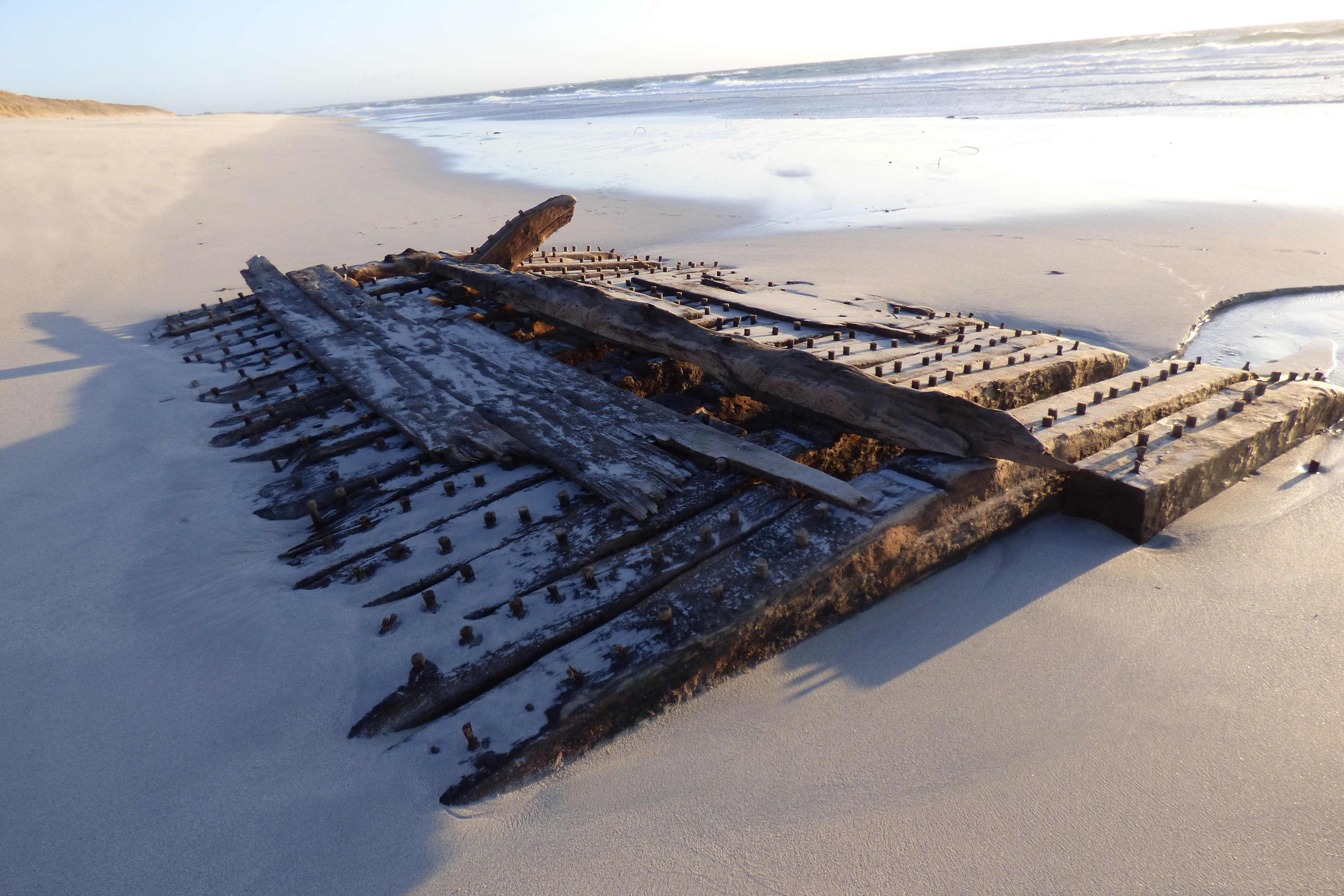Shipwreck exposed by winter storms to be preserved in tank for research
The wooden structure rose from the sands of Sanday, Orkney, in February.

Your support helps us to tell the story
From reproductive rights to climate change to Big Tech, The Independent is on the ground when the story is developing. Whether it's investigating the financials of Elon Musk's pro-Trump PAC or producing our latest documentary, 'The A Word', which shines a light on the American women fighting for reproductive rights, we know how important it is to parse out the facts from the messaging.
At such a critical moment in US history, we need reporters on the ground. Your donation allows us to keep sending journalists to speak to both sides of the story.
The Independent is trusted by Americans across the entire political spectrum. And unlike many other quality news outlets, we choose not to lock Americans out of our reporting and analysis with paywalls. We believe quality journalism should be available to everyone, paid for by those who can afford it.
Your support makes all the difference.A historic shipwreck discovered on Orkney following winter storms is to be preserved in a freshwater tank.
The wreck, thought to date from the 17th century and possibly Dutch, rose from the sands of Sanday after severe weather in February, and has been named the Sanday Shipwreck.
Orkney Islands Council has now received £80,000 from the National Heritage Memorial Fund, after applying for cash to preserve it for research.
A custom-designed tank, measuring eight metres by four and one metre high, will enable the wreck to be fully submerged in fresh water on site – protecting it from deterioration for two to three years while further research is carried out into its significance.
The tank is being built on Orkney and is expected to be ready for transporting to Sanday and installed at the island’s heritage centre later this month.
Specialist archaeologists from Wessex Archaeology, along with the council’s archaeologist Paul Sharman, advised the community on early conservation and recording of the wreck.
The wreck will be lifted into its temporary home later in September and researchers and visitors can attend by appointment.
The team from Wessex Archaeology and Dendrochronicle arrived in February to carry out initial sampling and recording of timbers.
Naval historian Nick Hewitt, who works for the council, said: “I don’t think there is any doubt in anyone’s mind that this is a remarkable wreck in uniquely good condition, possibly from what was one of the naval superpowers of the time.
“We’re very grateful to the National Heritage Memorial Fund for their support, and for answering our call for help so quickly, so that we could act with speed to help secure the wreck from further damage now, thus enabling the ongoing research it demands.”
Dr Simon Thurley, chairman of the National Heritage Memorial Fund, said: “The Sanday Shipwreck is an exciting discovery but many questions remain about where, and when, it originates.
“We are pleased to award this funding to Orkney Islands Council to protect and preserve the shipwreck, ensuring its survival and the chance for future research to determine its place in our maritime history.”
Clive Struver, chairman of the Sanday Development Trust, said: “I am incredibly proud of how our Sanday community, Orkney Islands Council, and experts from around the country have come together to protect and promote this remarkable discovery.
“It’s heartening to see everyone drawing on their expertise and connections to ensure its preservation.
“The support we’ve received, including the vital funding from the National Heritage Memorial Fund, underscores the importance of this shipwreck not just to Sanday, but to our shared maritime heritage.
“The Sanday heritage group is looking forward to continuing the work to safeguard this incredible piece of history for future generations.”